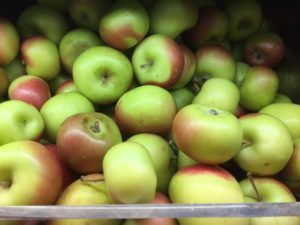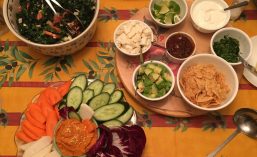When Diets Ruled The World
One of the challenges of being bigger than the nationally accepted BMI scale is that everyone is quick to offer you advice on ways to diet and “loose” weight. Now the best advice always starts with you talking to your primary, skilled clinician or practitioner. That advice from “Great Aunt Sally” may sound good, may just not hold much “weight”. Get it <grin>.
Unfortunately, because of that, there are many diets that promise easy weight loss and a healthier lifestyle. Those on the menu have includes the Paleo craze, the “group loose” collection from Weight Watchers and Nutrisystem to the more vintage Grapefruit diet, fasting and more.
Note: I don’t advocate or know enough about all of these to promote. Links are simply shared for your personal reading.
Diet Focus
One that I often heard about but always seemed like way too much work was the Macrobiotic diet. But since I have a pal recently starting it, it was a good reason to look into it more.
What separates the macrobiotic diet from all of these is that the macrobiotic diet promotes whole health improvement, including mental and spiritual improvement as well. This is a very general description of the diet. The macrobiotic diet is a very restrictive diet and takes effort and self-discipline to follow. It is more of a way of life rather than just a change in eating, often promoting a positive energy and a more informed state of mind. To follow a macrobiotic diet is to enlighten one’s life.
So Why Consider a Macrobiotic Diet?
There are several reasons why you might want to consider adopting a macrobiotic diet. Many people choose to start eating healthier after learning that they are at risk of developing a disease. While a macrobiotic diet won’t cure you of disease, it can improve your health and complement a treatment plan a medical professional has prescribed.
So if you’ve been diagnosed with diabetes, heart disease, premenstrual syndrome, or are at risk for breast cancer, then you may want to try the macrobiotic diet. Beyond these benefits, a macrobiotic diet promotes whole-body health. Whether you want to lose weight, eat clean, or have more energy, adopting a macrobiotic diet may be able to help you achieve these goals.
How to Follow the Macrobiotic Diet
 Macrobiotic foods include indigenous, local, seasonal foods that have been organically or naturally grown, processed, and stored. Some research indicates that the macrobiotic diet is good for the local economy because one of the biggest rules of the diet is to try to buy locally grown products. Besides buying locally grown products, there are a few other principles that dieters are encouraged to follow:
Macrobiotic foods include indigenous, local, seasonal foods that have been organically or naturally grown, processed, and stored. Some research indicates that the macrobiotic diet is good for the local economy because one of the biggest rules of the diet is to try to buy locally grown products. Besides buying locally grown products, there are a few other principles that dieters are encouraged to follow:
- Avoid cooking with electric appliances.
- Only use natural products such as wood or glass to hold and store foods.
- Chew each mouthful of food at least 50 times until the food is close to liquified in your mouth.
- Purify water before drinking it or cooking with it.
- Only eat and drink when hungry and/or thirsty.
Some people follow the rules strictly, while others choose to be a little more relaxed. The rules are more about adopting a holistic and balanced lifestyle rather than losing weight.
What to Eat on a Macrobiotic Diet
 The macrobiotic diet is a very restrictive diet. When describing the definition of macrobiotic foods, natural, wholesome, and nutritious are good words to use. The macrobiotic diet is composed of:
The macrobiotic diet is a very restrictive diet. When describing the definition of macrobiotic foods, natural, wholesome, and nutritious are good words to use. The macrobiotic diet is composed of:
- 40%-60% whole grains
- 20%-30% fruits and vegetables
- 10%-25% bean products
Just as some people are relaxed on the rules, some people are also relaxed on the included food groups. They may include seafood and/or lean meats as well. The foods should be primarily baked, boiled, or steamed when cooking.
The Overall Effect of the Macrobiotic Diet
Although the macrobiotic diet will help with weight loss, that isn’t the main focus of the diet. The diet is designed to help people adopt a more balanced, holistic, natural way of living. Adopting the macrobiotic diet means adopting a new lifestyle and in the process creating a new you.
Feeling inspired? Try these healthy recipes:
- Oatcakes with a Protein Punch
- Sweet & Smokey Butternut Squash, Apple and Carrot Soup
- Carrot “Hummus” Recipe with Raw Veggies
